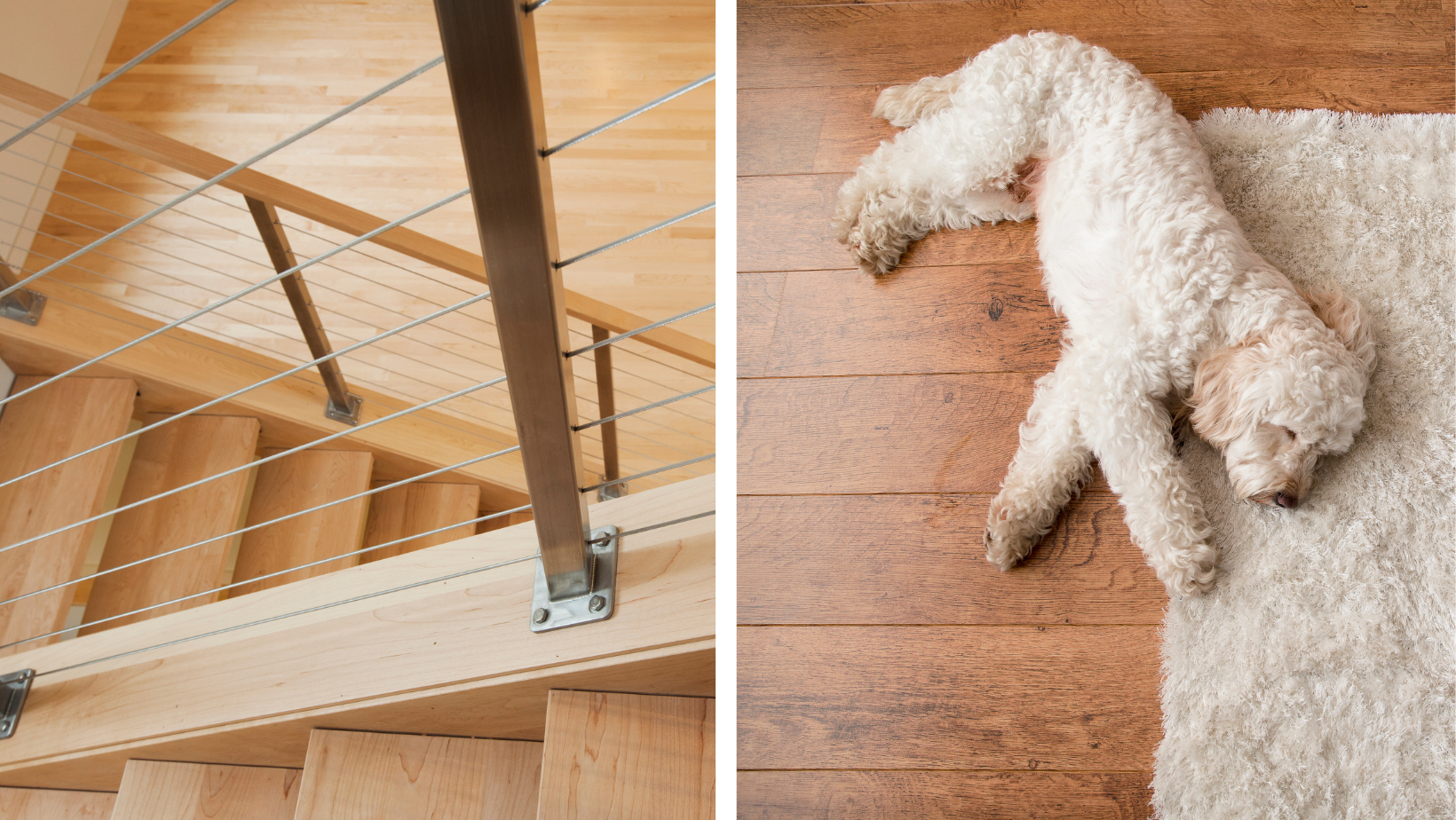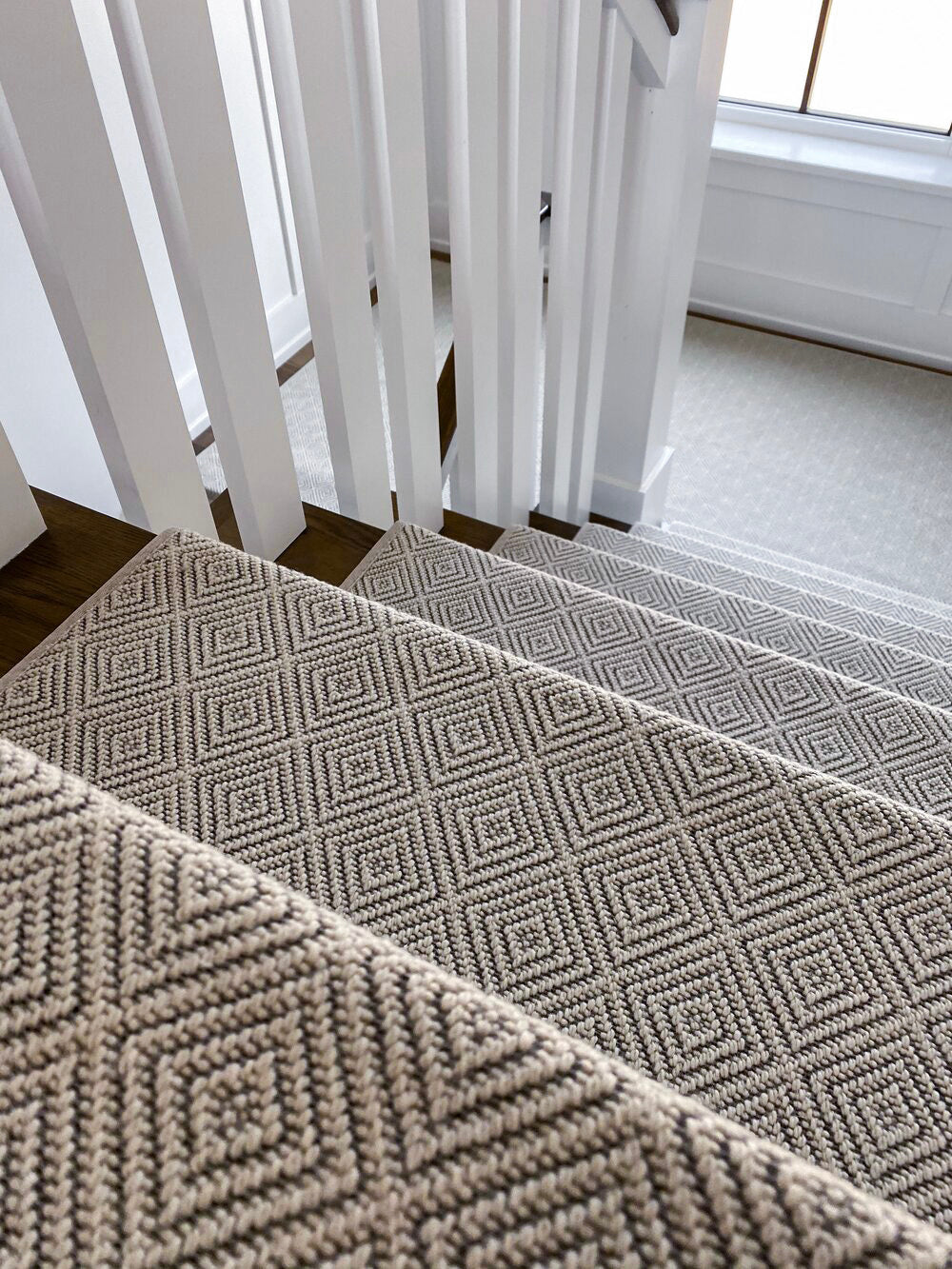Slipping on stairs is a common household hazard that can lead to serious injuries.
Have you ever wondered how do stair treads stay in place?
The answer lies in a variety of secure installation methods.
Stair treads stay in place through adhesive applications, built-in adhesion, rubber mats, and mechanical fasteners like nails or screws.
Each method offers unique advantages depending on your staircase material and personal preferences.
In this article, we’ll explore each option in detail, helping you choose the best method for safety and stability.
Whether you have hardwood, tile, or carpet stair treads, selecting the right securing method is crucial for long-term effectiveness.
Methods of Securing Carpet Stair Treads
There are multiple ways to keep stair treads secure, each with its own advantages and drawbacks.
These include:
-
Adhesive application – This includes options like carpet tape, double-sided tape, and glue. Adhesive ensures a strong grip and prevents movement.
-
Built-in adhesive backing – Some stair treads come with pre-applied non-slip backing or adhesive strips that stick directly to the stairs.
-
Nails or screws – A more permanent solution that physically secures the treads but can cause damage to the stairs.
-
Rubber mats – Non-slip rubber mats placed under stair treads provide traction without the need for adhesives or nails.
Each method has its pros and cons, which we will explore in detail.
Adhesive Application for Securing Stair Treads
Using adhesive is one of the most common and effective ways to secure stair treads.
Homeowners can choose from different adhesive types, such as carpet tape, double-sided tape, and heavy-duty adhesives.
These options ensure that treads stay firmly in place, reducing the risk of slipping and shifting.
Types of Adhesives Used for Stair Treads
-
Carpet Tape: This double-sided tape is specifically designed to bond to both the stair surface and the bottom of the stair tread. It is easy to apply and provides a strong grip.
-
Double-Sided Tape: Similar to carpet tape but available in different strengths, making it suitable for various stair surfaces.
-
Heavy-Duty Adhesive: Some homeowners prefer a more permanent solution, using industrial-grade adhesives to ensure long-lasting attachment.
Steps to Apply Adhesive Correctly
-
Clean the stair surface thoroughly to remove dust, debris, and grease that may weaken the adhesive bond.
-
Measure and cut the adhesive tape to fit the dimensions of the stair tread.
-
Peel off one side of the tape backing and firmly apply it to the back of the stair tread.
-
Remove the other side of the backing and press the stair tread onto the stair surface.
-
Apply firm pressure evenly across the entire tread to ensure maximum adhesion.
-
Allow the adhesive to set for the recommended time before stepping on the treads.
While adhesive is a great option, it is essential to choose the right type for your flooring material to avoid damage or weak adhesion.
Built-in Adhesive Features
Some stair treads are designed with built-in adhesion features, eliminating the need for separate adhesives.
These features include:
-
Non-Slip Backing: A rubber or latex backing that naturally grips the stair surface without additional adhesives.
-
Adhesive Strips: Pre-applied adhesive strips that offer a simple peel-and-stick installation.
Benefits of Built-in Adhesion Features
-
Quick and easy installation with minimal effort.
-
No need for additional adhesives, reducing mess and maintenance.
-
Provides a clean, damage-free solution for securing stair treads.
Limitations of Built-in Adhesion Features
-
May lose effectiveness over time, especially in high-traffic areas.
-
Not all built-in adhesives work well on every surface.
Oak Valley Designs offers high-quality stair treads with built-in adhesive, ensuring long-lasting grip and stability without damaging your stairs.
Rubber Mats for Stair Treads
Rubber mats are another effective option for keeping stair treads in place.
These mats create a high-friction surface that helps prevent slipping.
Advantages of Using Rubber Mats
-
No need for adhesives or nails, making them easy to install and remove.
-
Ideal for renters who want a temporary solution.
-
Provides additional cushioning, making stairs more comfortable to walk on.
Disadvantages of Using Rubber Mats
-
They may shift over time, especially with heavy foot traffic.
-
Not as secure as adhesive-based options, requiring occasional adjustments.
Nails or Screws for Stair Treads
For a permanent installation, homeowners can secure stair treads using nails or screws.
This method ensures that the treads stay in place even in high-traffic areas.
Pros of Using Nails or Screws
-
Provides the most secure attachment.
-
Works well for wooden stairs where adhesives may not hold effectively.
-
Long-lasting solution with minimal maintenance.
Cons of Using Nails or Screws
-
Causes permanent damage to the stairs, leaving holes that may be difficult to repair.
-
Requires tools and more effort for installation.
-
Removing nailed or screwed treads can be time-consuming.
Ensuring Long-Term Safety and Stability
Once stair treads are secured, maintaining their effectiveness is crucial.
Here are some tips to ensure their long-term stability:
-
Inspect regularly: Check for any signs of lifting or shifting, especially in high-traffic areas.
-
Reapply adhesive as needed: If treads start to lose their grip, reapply tape or adhesive.
-
Replace worn-out treads: Over time, stair treads may wear out and need replacement to maintain safety.
-
Keep stairs clean: Dirt and debris can reduce the effectiveness of adhesive and rubber-backed treads.
-
Enhance overall stair safety: Install handrails, improve lighting, and keep stairways free of obstacles.
How to Choose the Best Stair Tread Securing Method for Your Home
With multiple ways to secure stair treads, choosing the right method depends on your staircase material, household needs, and personal preferences. Here are key factors to consider when selecting the best option:
1. Staircase Material
-
Hardwood Stairs: Adhesive-backed treads or double-sided carpet tape work well without damaging the surface. Avoid nails or screws unless permanent installation is preferred.
-
Tile or Laminate Stairs: Non-slip rubber mats or strong adhesive tapes provide grip without leaving residue.
-
Carpeted Stairs: Built-in adhesive backing may not adhere properly, so carpet tape or mechanical fasteners may be required.
2. Household Traffic and Usage
-
High-Traffic Areas: Heavy-duty adhesive or nails/screws provide the most long-term stability.
-
Temporary or Rental Homes: Rubber mats or peel-and-stick adhesive strips allow for easy removal without damaging the stairs.
3. Pets and Children
-
For Pets: Choose stair treads with strong built-in adhesion or heavy-duty adhesive to prevent movement caused by frequent running.
-
For Children: Ensure treads are extra secure using adhesive and additional non-slip backing for maximum safety.
4. Ease of Installation and Maintenance
-
DIY-Friendly: Adhesive-backed treads and carpet tape are simple to apply and remove.
-
Long-Term Maintenance: Consider how often treads may need replacement or reapplication, especially in high-use areas.
By evaluating these factors, you can determine the most effective way to keep your stair treads in place while enhancing safety and longevity.
Stepping It Up
Understanding how stair treads stay in place allows homeowners to choose the best method for their specific needs.
Whether you opt for adhesive application, built-in adhesion, rubber mats, or a more permanent nail-and-screw installation, ensuring stair safety is a valuable investment.
Oak Valley Designs specializes in high-quality, handcrafted stair treads with advanced built-in adhesion, offering a seamless and effective solution for your home.
Ready to upgrade your stairs with secure, stylish treads?
-
Website: https://oakvalleydesigns.com/
-
Phone: (706) 331-0315
-
Email: info@oakvalleydesigns.com
-
Address: 30 River Ct SW Bldg E, Cartersville, GA 30120



